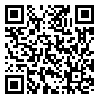Volume 25 - Special Issue
jrehab 2024, 25 - Special Issue: 702-725 |
Back to browse issues page
Download citation:
BibTeX | RIS | EndNote | Medlars | ProCite | Reference Manager | RefWorks
Send citation to:



BibTeX | RIS | EndNote | Medlars | ProCite | Reference Manager | RefWorks
Send citation to:
Amini B, Hosseini S A, Pishyareh E, Bakhshi E, Haghgoo H A. Designing an Exercise Protocol to Improve Impulsivity Control in Children With Attention Deficit Hyperactivity Disorder: A Pilot Study. jrehab 2024; 25 (S3) :702-725
URL: http://rehabilitationj.uswr.ac.ir/article-1-3400-en.html
URL: http://rehabilitationj.uswr.ac.ir/article-1-3400-en.html
Behzad Amini1 

 , Seyed Ali Hosseini2
, Seyed Ali Hosseini2 

 , Ebrahim Pishyareh *3
, Ebrahim Pishyareh *3 

 , Enayatollah Bakhshi4
, Enayatollah Bakhshi4 

 , Hojjat Allah Haghgoo1
, Hojjat Allah Haghgoo1 




 , Seyed Ali Hosseini2
, Seyed Ali Hosseini2 

 , Ebrahim Pishyareh *3
, Ebrahim Pishyareh *3 

 , Enayatollah Bakhshi4
, Enayatollah Bakhshi4 

 , Hojjat Allah Haghgoo1
, Hojjat Allah Haghgoo1 


1- Department of Occupational Therapy, School of Rehabilitation Sciences, University of Social Welfare and Rehabilitation Sciences, Tehran, Iran.
2- Social Determinants of Health Research Center, University of Social Welfare and Rehabilitation Sciences, Tehran, Iran.
3- Pediatric Neurorehabilitation Research Center, University of Social Welfare and Rehabilitation Sciences, Tehran, Iran. ,eb.pishyareh@uswr.ac.ir
4- Department of Biostatistics and Epidemiology, Faculty of Social Health, University of Social Welfare and Rehabilitation Sciences, Tehran, Iran.
2- Social Determinants of Health Research Center, University of Social Welfare and Rehabilitation Sciences, Tehran, Iran.
3- Pediatric Neurorehabilitation Research Center, University of Social Welfare and Rehabilitation Sciences, Tehran, Iran. ,
4- Department of Biostatistics and Epidemiology, Faculty of Social Health, University of Social Welfare and Rehabilitation Sciences, Tehran, Iran.
Abstract: (3300 Views)
Objective Impulsivity, as one of the early diagnostic indicators of attention deficit hyperactivity disorder, appears in childhood through movement. Decreasing impulsive behavior and increasing emotional-motor control over this disorder have been the focus of researchers and clinical experts. Inhibition deficiency is considered the root cause of impulsivity, leading to a deficit of impulsivity control and response control disorder.
Materials & Methods Based on the hypothesis of an inhibition deficiency, leading to disruptions in three areas of executive functioning, namely behavioral control, cognitive flexibility, and working memory, impulsivity control, and response control disorder are at the center of attention deficit hyperactivity disorder (ADHD) symptoms. This study designs a specific exercise package, including physical exercises in the form of rhythmic movements in the dual-task paradigm along with cognitive exercises in a step-by-step and difficulty level, considering the child’s interests, capabilities, and freedom of choice. The type of exercise at each level and its effect on improving impulsivity control in these individuals have been investigated.
Results The results indicated the possibility of performing the exercises in dual tasks and the high acceptance of gradual difficulty in performing the exercises of this package. The preliminary analysis of the study shows the relative improvement of the indices of attention, caution and response control in each of the individual participants separately.
Conclusion The combination of exercises in the protocol, including rhythmic and providing optional settings adding companionship therapists in the form of therapeutic relation led to feasibility. The results in the field of improving the infrastructure of impulsivity control can be promising and worthy of consideration; however, conducting research with a larger number of participants and examining the results compared to the control group can be the basis for extensive research in this field.
Materials & Methods Based on the hypothesis of an inhibition deficiency, leading to disruptions in three areas of executive functioning, namely behavioral control, cognitive flexibility, and working memory, impulsivity control, and response control disorder are at the center of attention deficit hyperactivity disorder (ADHD) symptoms. This study designs a specific exercise package, including physical exercises in the form of rhythmic movements in the dual-task paradigm along with cognitive exercises in a step-by-step and difficulty level, considering the child’s interests, capabilities, and freedom of choice. The type of exercise at each level and its effect on improving impulsivity control in these individuals have been investigated.
Results The results indicated the possibility of performing the exercises in dual tasks and the high acceptance of gradual difficulty in performing the exercises of this package. The preliminary analysis of the study shows the relative improvement of the indices of attention, caution and response control in each of the individual participants separately.
Conclusion The combination of exercises in the protocol, including rhythmic and providing optional settings adding companionship therapists in the form of therapeutic relation led to feasibility. The results in the field of improving the infrastructure of impulsivity control can be promising and worthy of consideration; however, conducting research with a larger number of participants and examining the results compared to the control group can be the basis for extensive research in this field.
Type of Study: Applicable |
Subject:
Occupational Therapy
Received: 29/11/2023 | Accepted: 16/06/2024 | Published: 1/11/2024
Received: 29/11/2023 | Accepted: 16/06/2024 | Published: 1/11/2024
Send email to the article author
| Rights and permissions | |
 |
This work is licensed under a Creative Commons Attribution-NonCommercial 4.0 International License. |





